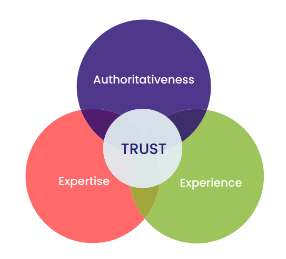Generative Engine Optimization (GEO): A Marketing Primer

By Nick Nelson
The new era of search is here. Artificial intelligence is unlocking new ways for people to find information and solve problems, with greater speed and confidence than ever before. AI-powered engines and platforms are fundamentally changing the nature of online search as we know it.
It’s an exciting time. These emerging AI tools can do some really cool things. But for business leaders, it can also feel like a scary time, with your brand’s visibility and engagement at risk.
Understanding generative engine optimization and the unique (but not radically different) principles it entails will be very helpful in charting your marketing strategy’s future.
The good news is that if you’ve been developing a forward-thinking SEO strategy, you’re already on the right track, and if not, you aren’t yet too far behind.
What is generative engine optimization (GEO)?
Generative engine optimization (GEO) refers to the practice of optimizing content specifically for AI-driven search engines and features, such as ChatGPT, Google AI Overviews, Perplexity AI, Copilot, Gemini, Llama, and more. This involves tailoring your content to show up in AI-generated summaries and results, by incorporating the qualities these search tools prioritize.
Generative engine optimization vs. search engine optimization
They have many overlapping elements, but GEO and SEO are distinct. While SEO largely focuses on traditional web optimization techniques like link-building, keyword placement and site structure, GEO is more narrowly concerned with the substance, makeup and credibility of the content itself.
In essence, GEO is about making your brand’s content stand out to intelligent technologies from a saturated information environment. Luckily, this is what modernized SEO strategies are already striving to do.
Benefits of generative engine optimization
The rise of generative search and GEO best practices can have very positive implications for brands. Here are a few worth mentioning:
Customers have new ways to find your brand. As more and more people start using these AI-powered tools and platforms, you have more pathways to impressions and engagement beyond traditional search engines.
Showing up in AI search makes a strong impression. At TopRank, we often remark that showing up near the top of a search for a target keyword is doubly beneficial: not only are you more likely to earn clicks, but you send a compelling signal to searchers, who recognize that Google heavily weighs credibility and authority of a source as SEO ranking factors. This can be even more true for generative AI engines, which scrutinize the distinct value of cited content as they synthesize and summarize.
Competitors are still catching up. Many companies still don’t have GEO in their marketing lexicon unless they’re talking about geographical regions. Optimizing for generative search as an extension of your SEO helps you stay ahead of the playing field.
GEO rewards audience-centered SEO strategies. If you’ve already …read more
Source:: Top Rank Blog







